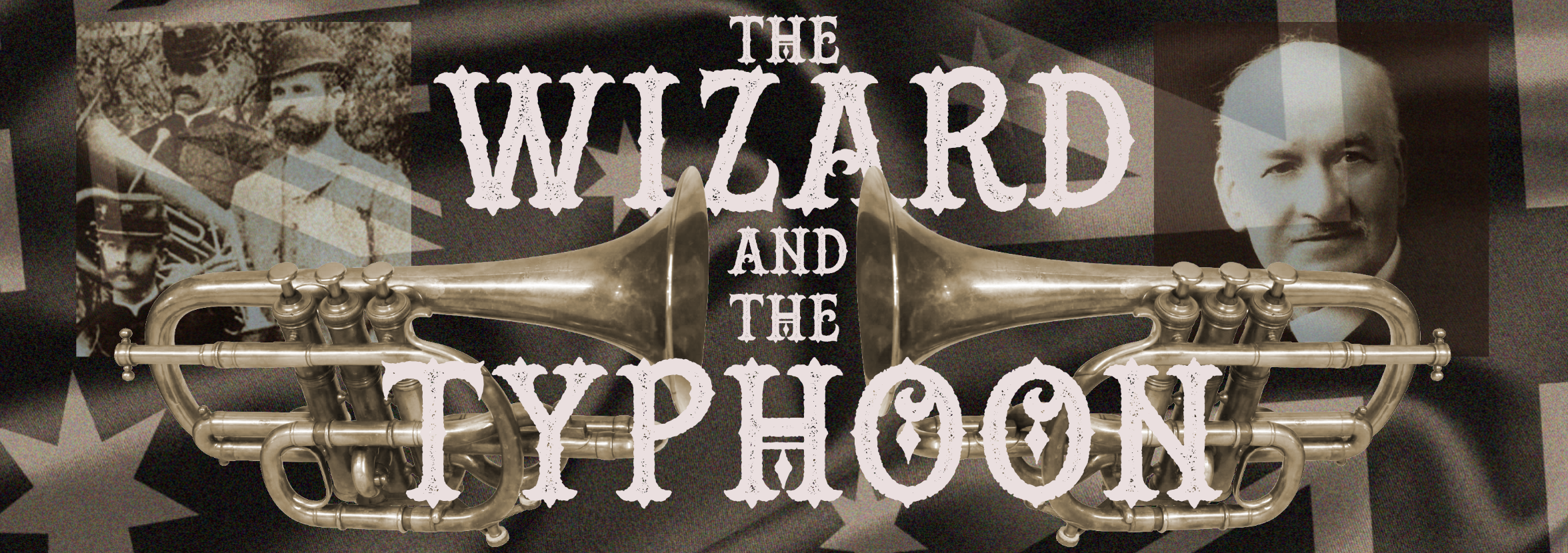On this
Pieces by Thomas Edward Bulch (1862-1930)
Sandhurst – by T E Bulch: You’d be forgiven for thinking it might have been named after the military academy, but no. Sandhurst was, for a while, the name of what became, and is now, the city of Bendigo in Australia
Kitchener’s Army – by T E Bulch: Lord Kitchener wasn’t just known for his connection with the first World War, but was also notorious for his actions during the Boer War
Craigielee – by T E Bulch: The march that became the music for Waltzing Matilda after being overheard at Warnambool Races and played by ear to ‘Banjo” Patterson – based on a traditional Scots piece that Tom Bulch probably learned as a lad from a violin book by Glaswegian violinist Carl Volti (Archibald Milligan, often mistaken for Bulch himself)
The Typhoon – by T E Bulch: Tom Bulch’s first published brass band march, whitten whilst a lad in Shildon, when he was 17 according to his family, which evidence seems to support.
Il Barbiere – by T E Bulch: A Bulch overture arrangement of some of the most memorable sequences from Rossini’s “Barber of Seville” – a lovely romp that shows his skill as an arranger.
The Tripod – by T E Bulch: A cornet player himself, Bulch didn’t write many solo pieces, but those he did were generally for cornet, like this short but fun composition.
Memories of England – by T E Bulch: Another overture beautifully pieced together from tunes and songs that would have been popular when Tom Bulch was still living back in Shildon
General Joffre – by T E Bulch: A composition from the First World war era in tribute to the French military General Joffre who was influential during the early stages of the war – here rendered not by
Pieces by George Allan (1864-1930)
Imperioso – by George Allan: Not one of the Allan marches that endures as much today, but we love it nonetheless.
King Edward – by George Allan: We tend to know him more for his scintillating brass contest marches, but this overture was composed ahead of the coronation of King Edward VII after the death of Queen Victoria.
Penelope – by George Allan: Again something different by George Allan – a set of waltzes this time, a relatively late work published from his home address.
Senator – by George Allan: One of Allan’s greatest marches that deserves to be heard a little more often – first published in 1906 it was one of the marches that heralded the self-published era in which his best work was produced.
Knight Templar – by George Allan: Little needs to be said about this one, other than that it vies with The Wizard for the honour of being his crowning musical achievement. He’d have loved to know that it’s still being played by some of the best bands so long after his passing.
The Wizard – by George Allan: Published in 1909, four years before Knight Templar, this is possibly my favourite George Allan march (not all the group would possibly agree). George said it had “grand effects” and I think he got that right.
Raby – by George Allan: Named for the castle and estate that is the home to Lord Barnard, this is another of the Allan marches that still proves popular today – and rightly so.
Jupiter – by George Allan: Discovered by Steve Robson along with a collection of other unsold Allan marches in the attic of the old Shildon bandroom.
